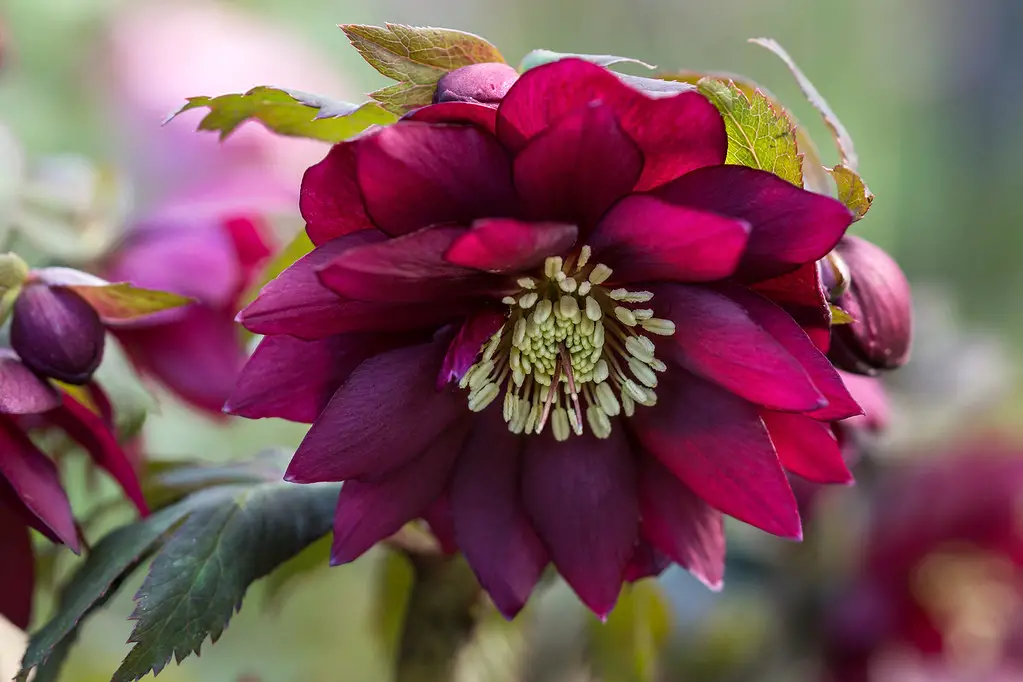Hellebores, also commonly known as Lenten roses or Christmas roses, are perennial plants with elegant flowers, perfect for brightening up shady areas during late winter and early spring. They are notable for their large, bowl-shaped flowers, which come in a range of colors including white, green, pink, purple, and even near-black. Hellebores are often cherished by gardeners for their ability to bloom when most other plants are dormant, adding interest and color to the winter garden.
Native to much of Europe and western Asia, Hellebores have a long history of cultivation. Their unique blooming period, combined with their graceful appearance and low-maintenance care requirements, has led to a surge in popularity in recent years. Several species and hybrids exist, all with varying attributes but generally sharing the same care needs.
Hellebores are known to be hardy and resistant to both frost and drought. In addition to their resilience, these plants are deer-resistant and can thrive in a variety of garden conditions, making them an excellent choice for many gardeners. Despite their common names, they are not related to roses.
| Attribute | Details |
|---|---|
| Common Names | Lenten Rose, Christmas Rose |
| Botanical Name | Helleborus |
| Family | Ranunculaceae |
| Plant Type | Perennial |
| Mature Size | 12-18 inches tall, 18-24 inches wide |
| Sun Exposure | Partial shade |
| Soil Type | Well-drained, loamy soil |
| Hardiness Zones | 4-9 |
| Native Area | Europe, Western Asia |
Hellebores Care
Hellebores are easy to grow and require minimal care. They are particularly valued for their ability to thrive in shady locations where many other plants struggle. The care they do require includes proper planting in well-drained soil, consistent watering, and occasional fertilizing.
Despite their robust nature, Hellebores can be sensitive to poor drainage and overly wet soil. Planting them in a well-draining location, and avoiding excessive watering, will help ensure a healthy plant that provides beautiful blooms year after year.
Light Requirement for Hellebores
Hellebores prefer partial shade but can tolerate more sun in cooler climates. They often flourish under deciduous trees, where they can receive filtered sunlight.
Soil Requirements for Hellebores
Well-drained, loamy soil enriched with organic matter is ideal for Hellebores. A slightly alkaline soil pH of around 7.0 promotes optimal growth.
Water Requirements for Hellebores
Consistent watering is important, especially during the first year as the plant becomes established. Once established, Hellebores are quite drought-tolerant but benefit from regular watering in extended dry periods.
Temperature and Humidity
Hellebores are cold-hardy and can survive temperatures well below freezing. They do not have specific humidity requirements but thrive in typical garden conditions.
Fertilizer
A balanced, slow-release fertilizer applied in late winter or early spring will provide the nutrients Hellebores need for vigorous growth and flowering.
Pruning Hellebores
Pruning consists mainly of removing old, damaged, or dead leaves to improve appearance and promote new growth. Cutting back the entire plant after flowering can rejuvenate it and stimulate new growth.
Propagating Hellebores
Hellebores can be propagated by dividing mature plants in early fall. The divisions should be planted immediately in well-prepared soil.
How To Grow Hellebores From Seed
Growing Hellebores from seed can be a lengthy process. Fresh seeds can be sown outdoors in late summer or early fall, and should be lightly covered with soil. Germination can take up to a year or more, so patience is required.
Common Pests & Plant Diseases
Aphids
Aphids can be treated with insecticidal soap or neem oil.
Black Death of Hellebores
This disease is caused by a virus and can be difficult to manage. Affected plants should be removed to prevent spread.
Common Problems With Hellebores
Drooping Leaves
This can be a sign of either underwatering or overwatering. Adjusting watering practices can usually correct the problem.
Black Spots on Leaves
Often a fungal issue, this can be addressed with proper spacing, improved air circulation, and fungicides if necessary.
Pro Tips
- Plant Hellebores in partial shade for optimal growth.
- Provide well-drained soil and avoid overwatering.
- Fertilize with a balanced, slow-release fertilizer in early spring.
- Prune old or damaged leaves to encourage new growth.
- Propagate by division or patience with seed sowing.




